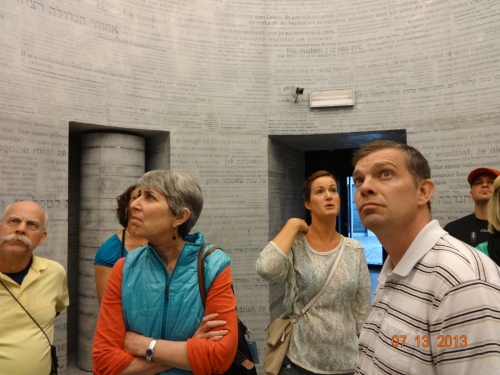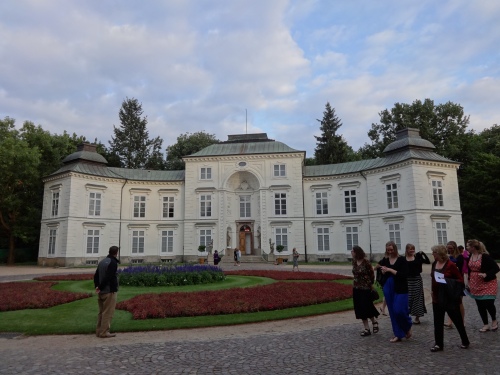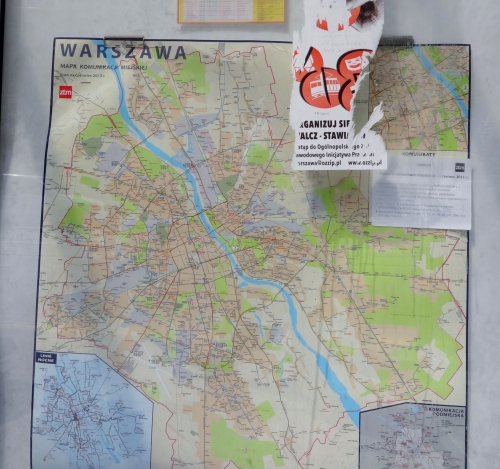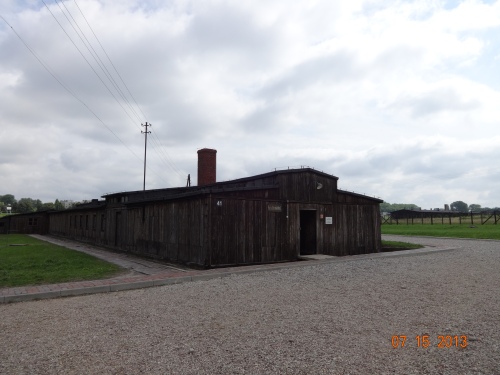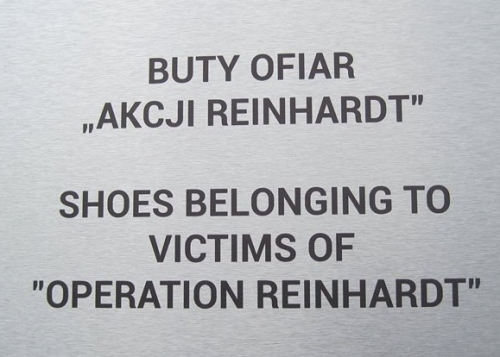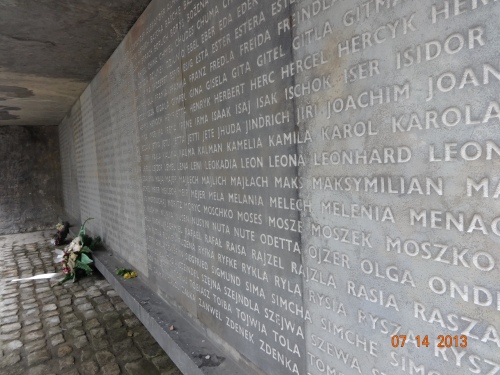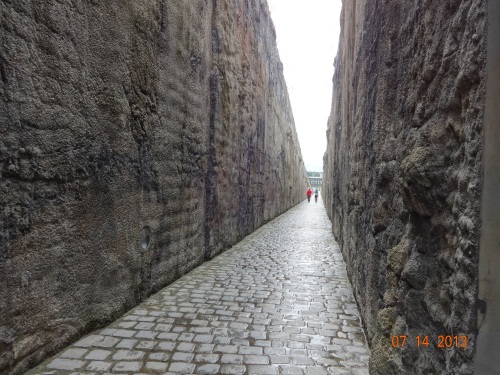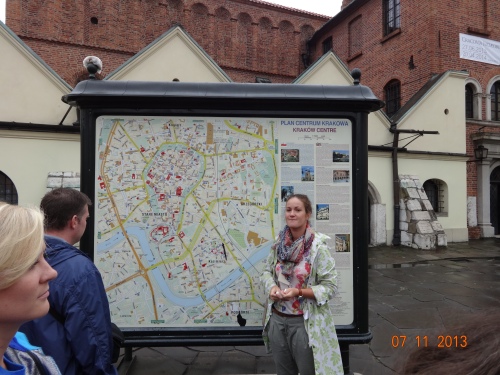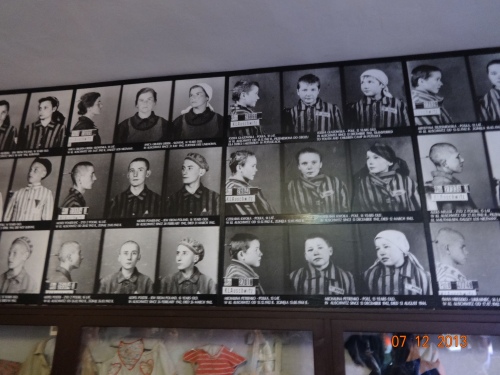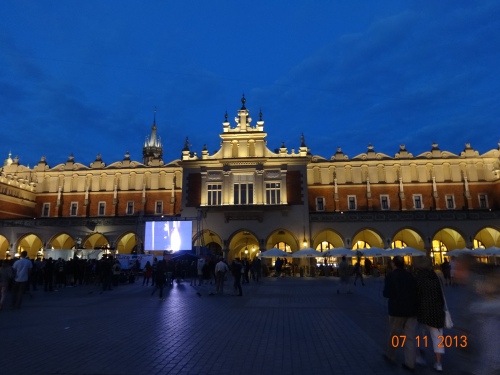~Matthew Rozell, a history teacher whose project reunited hundreds of Holocaust survivors with the American soldiers who liberated them, takes a backwards journey to the authentic sites of the Holocaust, retracing the path of the survivors who are now his friends.~
A year ago I took one of the most transformative journeys of my life, with 24 fellow educators, to study the Holocaust and the Jewish resistance to it, in Washington, DC, Germany, the Czech Republic, and Poland. I kept an extensive diary and took tons of photographs. And contrary to many assumptions, it was a journey that led to profound understandings about life, not death. For the next several days, I have decided to go back and retrace my steps and try to process what unfolded for me.
****************************
July 18.
It’s been a helluva trip. I have toured authentic sites, met some good people, forged some pretty strong bonds with other educators as colleagues and friends. I’ve tramped the grounds where hundreds of my Holocaust survivor friends were held and/or had family members perish.
So. Now it is time to begin processing it all.
Writing this, I have been traveling and pondering for over 24 hours now. I am back in the USA – missing a flight, the airlines seemingly conspired to help extend my pensive mood by granting me a complimentary hotel room on the outskirt of nowhere near Dulles Airport- so my adventure will be extended one more night. I hardly know what day of the week it is but in a way that is kind of refreshing.
From Day One I think all of us on the trip are in the same boat- folks you know are excited and proud of you for being selected on an elite study tour for teachers, but maybe question a bit why one would spend $3 or 4K of one’s own treasure*, leave your family and loved ones for three weeks to travel with “strangers”, or forfeit 3 weeks of summer earning potential to tour the sites of the scenes of the greatest crime in the history of the world.
Well, you gotta give them that. This is kind of strange- or so it may seem if you are on the outside cupping your hand on the window glass trying to look in.
I think, as one of my Facebook followers put it, that we did something very brave. We toured over two dozen places where I figure 3 million people were murdered.
Or to put it in maybe a more appropriate context, we saw, walked through, and touched the ground where nearly a million families were killed. By no means did we tour the thousands of camps and subsites where millions more lives were destroyed.
The numbers tell the story in a way, but not completely, because try as one might, one cannot understand them. I know the numbers- I have the knowledge- but as Steve our tour historian says, there is a clear difference between knowledge and understanding. Some things are beyond comprehension.

Belzec. Letter from survivor to me, who lost her family there.
400,000 murdered in Belzec.
1.1 million in Auschwitz II/Birkenau.
900,000 at Treblinka.
We have been to all of these places in the past three days. People comment that they can’t get their head around it, they can’t begin to fathom the mass indifference to human life that we have witnessed.

Treblinka. 900,000 lost.
So let’s look at what we did come to some kind of understanding about.
What we learned was of the ripple effect of the seemingly small things that illustrated the resilience of the human spirit. That resistance does not have to be just using physical force against your tormentors- it goes way beyond that.

Majdanek. My “I’m in a really, really bad dream” day. Under the Soviet era memorial dome lies a pile of ash and cremated bone the size of a small house.
The program has been in operation for 30 years, begun by survivors of the Warsaw Ghetto, those who resisted but survived. Vladka Meed pointed out that the Ghetto Uprising in 1943, which held the Germans at bay for weeks, was begun by the young people. And it is for them, the young, that we educators make this trip.
So, trying to keep it simple and summing it up:
1. This was not a trip about death. It was a trip about life. I can’t say that I found God, but this trip was one of the most spiritually reflective journeys that I have ever been on, bordering on a religious experience. So folks will ask when I get home- how was it?-my answer will be:
Righteous. For me, not epic, not amazing, not awesome.
Righteous.
2. I had many of my Holocaust educational and pedagogical thoughts confirmed and other assumptions challenged. Some ideas presented to me I felt comfortable enough to challenge myself, but in thinking about them, I came to deeper understanding. The most important understanding confirmed is a problem that all teachers must struggle with in our flawed educational system. We have to be diligent about avoiding the promotion of generalization as fact, to avoid doing a disservice to our students. If you are teaching this history, you had better be versed enough and nuanced enough to accept inconsistencies, problematic complexities, and probe these things to induce a more intricate set of questions to your kids.
3. We have to be willing to accept that perhaps there are no correct answers- a notion that educators are uncomfortable with- but one that must be accepted, nevertheless. To promote generalities in this complex history, or any history is wrong. But especially this one, it seems to me. It was a watershed event in the history of the world, and for humanity, on many levels.
4. Lastly, it was certainly not just a trip to study how to teach the Holocaust. Perhaps reinforced more was how NOT to teach it. And at the end of the day, it was a tour not only of authentic sites, but also of the mind, and how to make it work.
Sometimes I thought myself to the verge of tears, behind the sunglasses. Thinking-not only about answers- but about the questions.
And that’s what these teachers “did on our summer vacation”.
-
* thanks to the American soldiers, Holocaust survivors, and special folks who were able to support my efforts.
